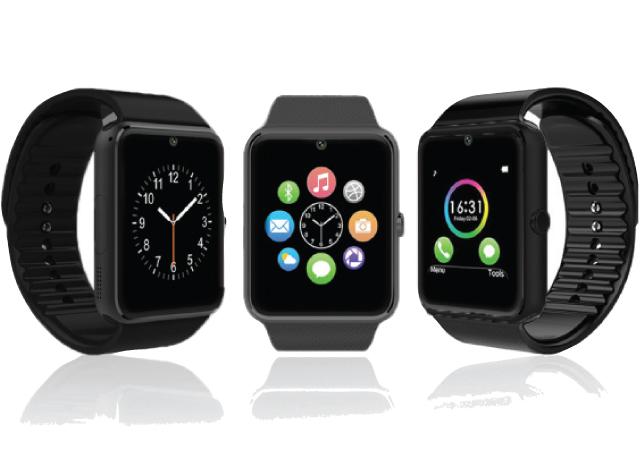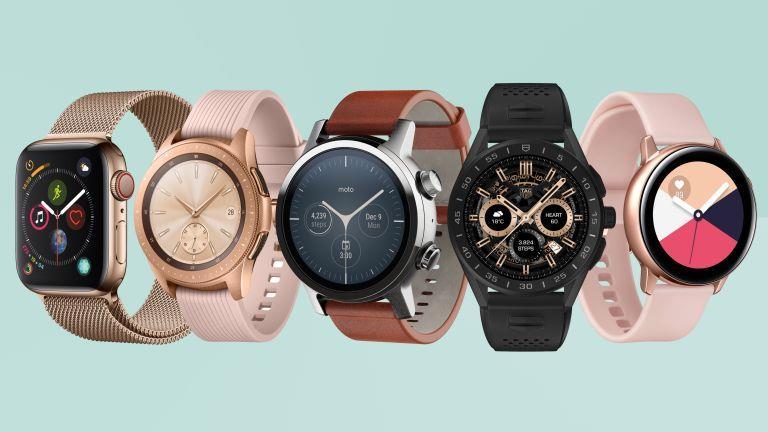A Decrease font size.A Reset font size.A Increase font size.
Tomorrow - Technology is now present in all aspects of our lives, including those related to fitness.
With smart watches, it has become easier to collect data on the user's vital organs and health measurements.
Despite the proliferation of smart watches, many consumers are facing difficulty in deciding which one is the best in terms of capabilities and utility.
Understanding the refinements of these smartwatches is important to help buyers make informed shopping decisions.
The normal human heart rate during the rest period ranges between 60-100 beats per minute.
But the resting heart rate for an experienced athlete might be close to 40 beats per minute.
It is defined as a measurement of the number of times the heart beats during a specified period of time.
A decrease in heart rate is an indicator of more effective blood pumping and better heart health.
Measuring the heart rate during exercise is a useful guide to assessing exercise intensity.
A simple calculation can be done to find out the strength of the exercise that you must exercise.
First, subtract your age from the number 220, and the result from this equation is the upper limit of your heart rate for age.
For example, if you are 25 years old, your heart rate should be around 190 beats per minute.
After calculating your estimated upper heart rate, you can search for appropriate exercises to achieve a high heart rate.
According to the American Heart Association, your heart rate during moderate-intensity exercise should be 50-70% of your maximum heart rate.
As for high intensity exercises, it should reach 70-85%. For example, this means that a 25-year-old's heart rate should be 98-137 bpm for moderate intensity exercise and 137-166 bpm for vigorous intensity exercise.
These rates may not be accurate but are a good reference.
Heart rate change is a measure of the time variance between heartbeats. The time variation between heartbeats cannot be controlled because it is the responsibility of the autonomic nervous system.
The contrast between heartbeats may decrease when a person is exposed to stress or physical exertion, while it may rise when a person is in a state of rest.

Thus, a high rate of change in heart rate during the rest period is an indicator of high fitness and good heart health.

Heart rate change is also a useful tool for controlling stress and may also be useful in measuring any autonomic nervous system imbalance, especially during exercise (the rate of change in heart rate should be low when compared to rest).
Smart watches make it easy to read heart rate data and show information about a person's emotional state.
With the advancement of technology, the ECG is the most exciting aspect of smartwatches to date.
It is used to check heart rhythm and electrical activity and is used to identify atrial fibrillation.
The electrocardiogram is a powerful piece of technology that can measure and identify electrical impulses that are generated from the heart and through the surface of the skin.
The electrocardiogram works by placing ten plates on specific areas of the body.
And smart watches have developed a new type of electrocardiogram, which measures electrical charges through two contacts, one on the back of the watch and the other on the screen when touched.
Although this technology is still new, the accuracy of the diagnosis has been confirmed compared to the old versions.
This technique cannot be used to classify other types of arrhythmias.
It is not recommended for self-diagnosis even of atrial fibrillation.
The normal rate of oxygen saturation means the rate of oxygen in the blood, and it should be between 95-100%.
Any rate lower than that requires a visit to the doctor.
Oxygen saturation depends on various factors, including the amount of inhaled oxygen, the efficiency of gas exchange in the lung (oxygen and carbon dioxide) and the number of hemoglobin (cells responsible for transporting oxygen).
Hemoglobin affinity (how closely oxygen binds to it).
The presence of a device to measure oxygen saturation may be useful during exercise, as it helps to monitor breathing.
Sleep plays an essential role in physical fitness and health in general. Sleep helps to revive and repair any damage caused by intense exercise, which may lead to partial satisfaction in the muscles and bones.
Sleep is also an integral part of cognitive function.
The stages of sleep are divided into four different stages and two general categories. The first category is rapid eye movement, which is one of the most important aspects of cognitive-functional sleep and is the dream stage.
The second category is non-rapid eye movement. Smart watches are able to monitor the difference in breathing and heart rate during these stages and are able to assess sleep quality and establish a healthy sleep cycle.
Blood pressure is a measure of the pressure output from the heart. And the blood pressure should be less than 120/80.
This is a good indicator of complications and heart disease.
Unfortunately, there are no techniques and devices to measure blood pressure and blood glucose measurements yet.
The choice of device type depends on your personal choice. If you are addicted to exercise, Fitbit watches are able to determine key fitness metrics.
It can link this information through an application on smartphones.
If you prefer engineering, utility, and ease of use, an Apple Watch or a Samsung Watch might be best for you.
It is necessary to do your own research based on your own needs and beware of scammers.
(Translated by Youmna Khalil Tahl - from the Jordan News website)
Tags smart watches